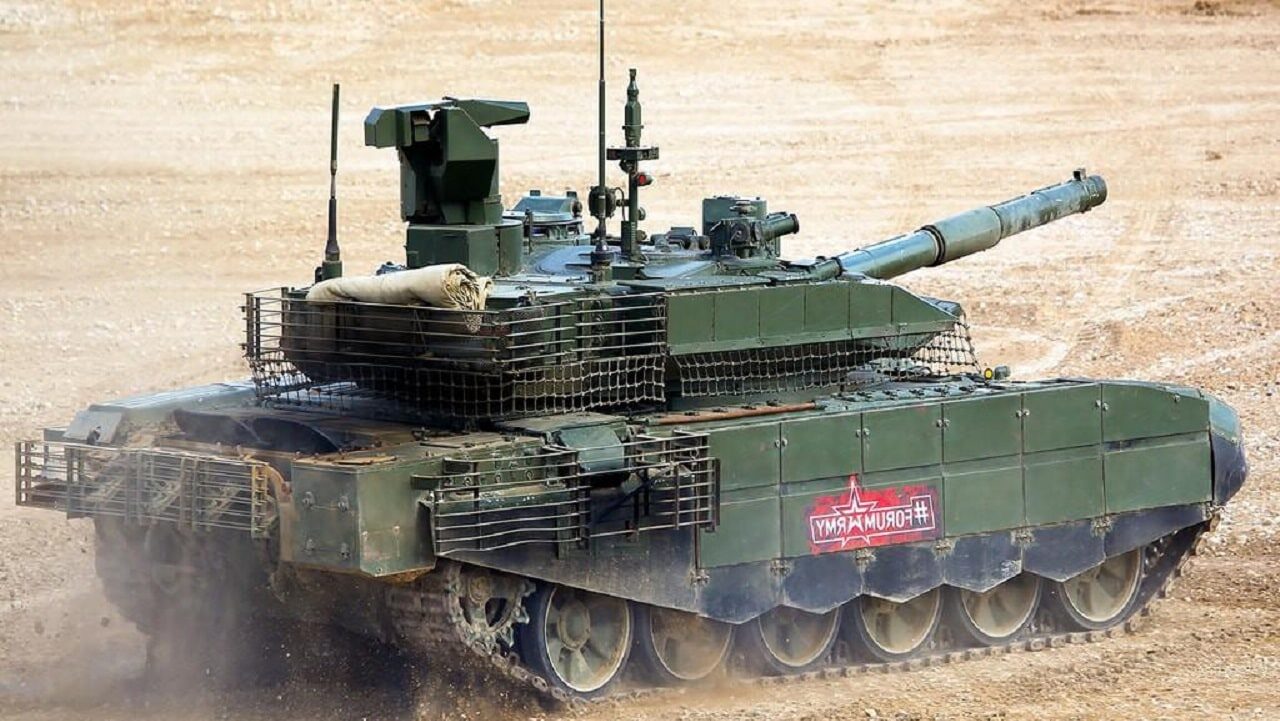The T-90M Tank, Explained – With roots in the Cold War, the T-90 tank debuted in 1992, just after the Soviet Union’s collapse. The tank was designed as a replacement for Soviet second-generation tanks, like the T-64 and T-72.
Long Time Coming
After a quarter-century of service, an upgraded version of the T-90, the T-90M, was unveiled in 2017 and is now being delivered to the Russian army in quantity. The T-90M is a “modernized” third-generation tank – not quite a fourth-generation tank, which other world powers are currently developing – but too advanced to be a true third-generation tank.
The upgraded T-90M has improved armor over the original. Whereas the T-90 was encased in Kontakt-5 armor, the M-variant uses Relikt built-in Explosive Reactive Armor (ERA). ERA is designed to provide protection against tandem warheads, and reduce the likelihood of penetration from armor-piercing fin-stabilized discarding sabot (APFSDS) rounds. The T-90M also features rubber side skirts with additional armor plating; Cage armor, special netting; and spall lining are used to supplement the tank’s protection. For the sake of the crew and internal equipment, the tank uses an NBC system, which uses tank interior sealing and overpressure generation to protect against mass destruction weapons. The T-90M also features a clever countermeasure system: smoke grenade dischargers triggered when a laser beam sights the tank, making the tank a more elusive target.
Along with the improved defensive features, the T-90M also has new, upgraded offensive features. The main gun was upgraded to the 2A46M-4 (from the 2A46M). The new gun has a longer range and 15-20 percent improved accuracy. Like all Russian main tanks, the T-90M fires 125mm ammunition – either APFSDS, HE, or HE-FRAG rounds. The T-90M relies on an autoloader, capable of carrying 22 rounds at once (another 21 rounds are carried on board, for a total of 43). The T-90M can also fire a 9M119 Refleks anti-tank guided missile, which has a 4-5 kilometer range – and can even be used to shoot down low-flying helicopters.
A V-92S2 multi-fuel diesel engine capable of providing 1,000 horsepower drives the T-90M. An Auxiliary Power Unit (APU) – a mechanism typically associated with aircraft – provides the tank with energy for purposes other than propulsion. The tank is also equipped with a self-entrenching blade, which can dig the tank an emplacement in 12-40 minutes (depending on the soil type). The tank can also be equipped with a mine plow, or a deep wading kit, which allows the tank to ford water obstacles measuring up to 5 meters.
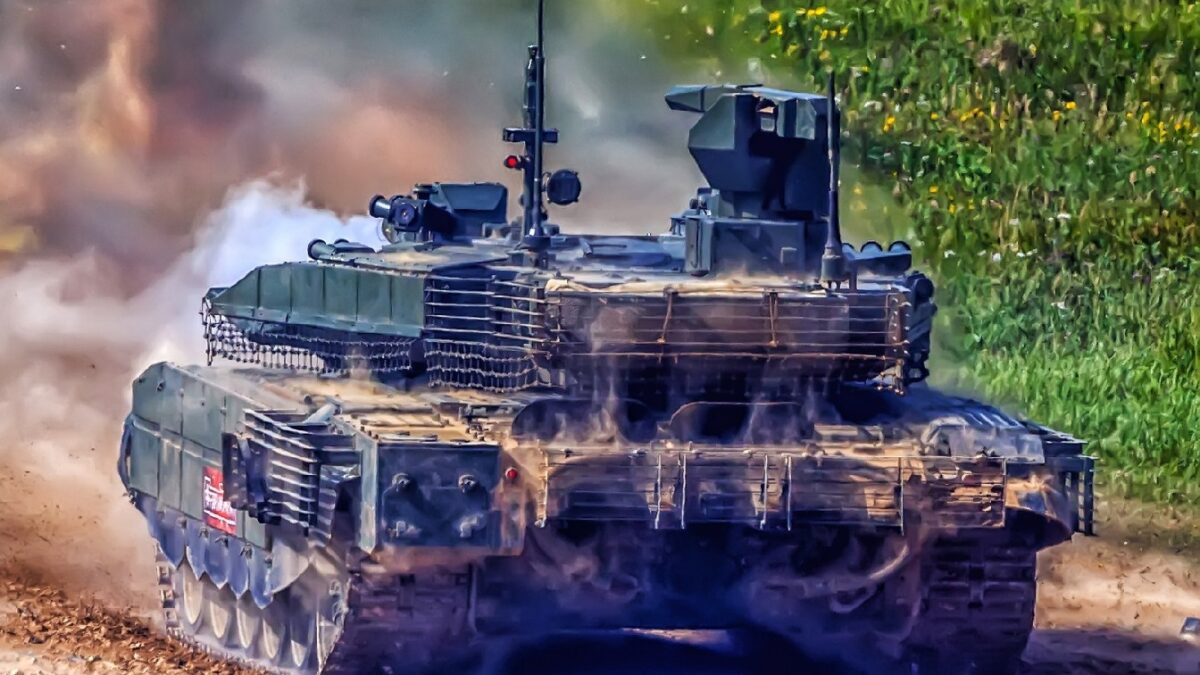
T-90M from Russian Military in Ukraine.
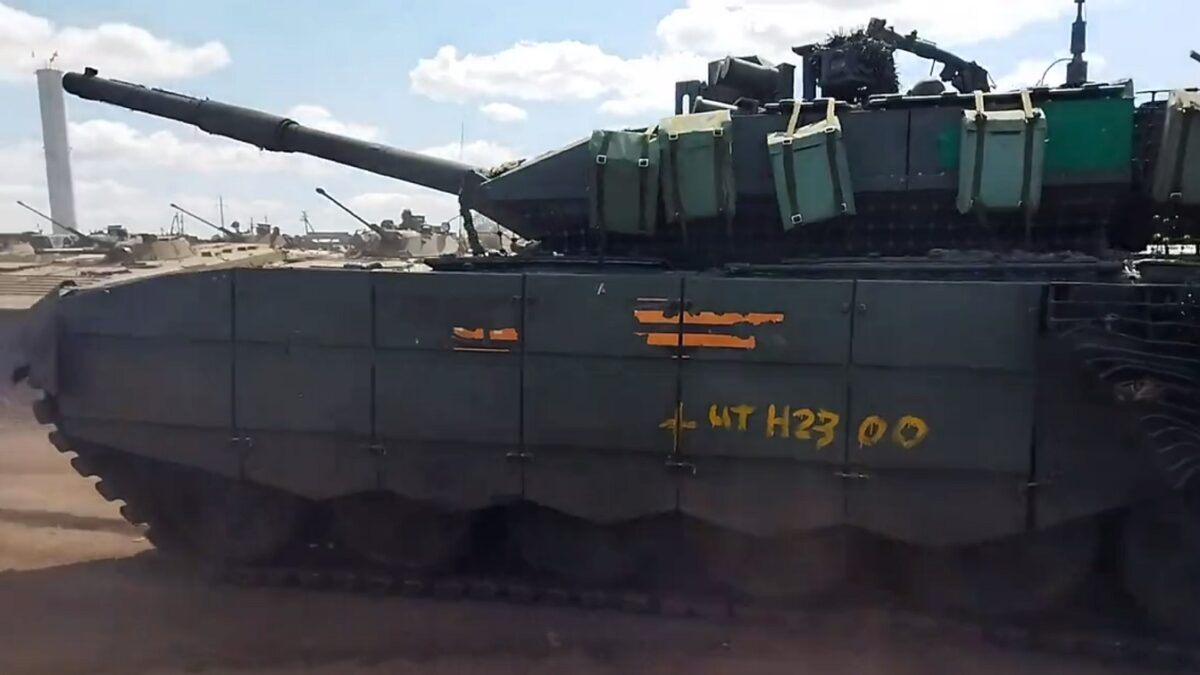
T-90M tank. Image Credit: YouTube Screenshot.

T-90M. Image Credit: Vitaly M. Kuzmin.
The three-man crew – a commander, gunner, and driver – rely on a communication and command suite, plus digital communication systems that are similar to Russia’s fourth-generation main battle tank, the T-14 Armata. While the T-14 was designed as a replacement for the aging T-90, the older tank is much cheaper and easier to maintain. So, pragmatically, the Russians are not just replacing their T-90 fleets wholesale with T-14s – they can’t afford the direct swap. Instead, they are upgrading more and more T-90s into the T-90M variant, which is why the tank appeared so prominently during the war in Ukraine.
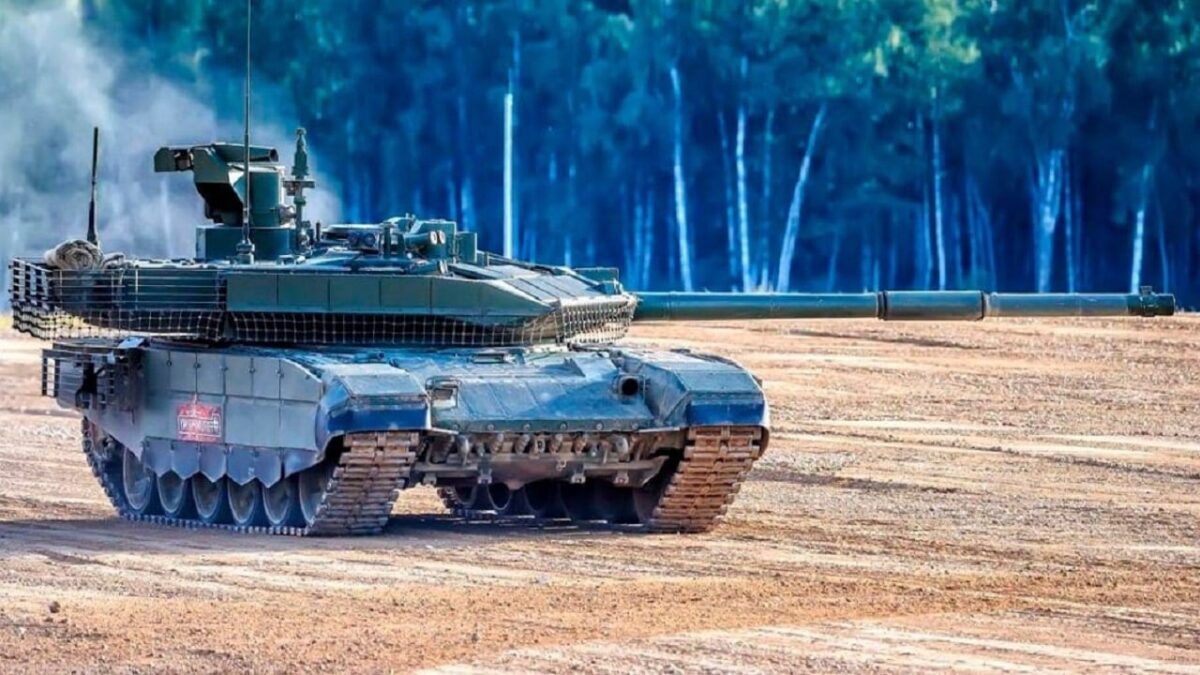
Russian T-90M tank. Image Credit: Twitter.
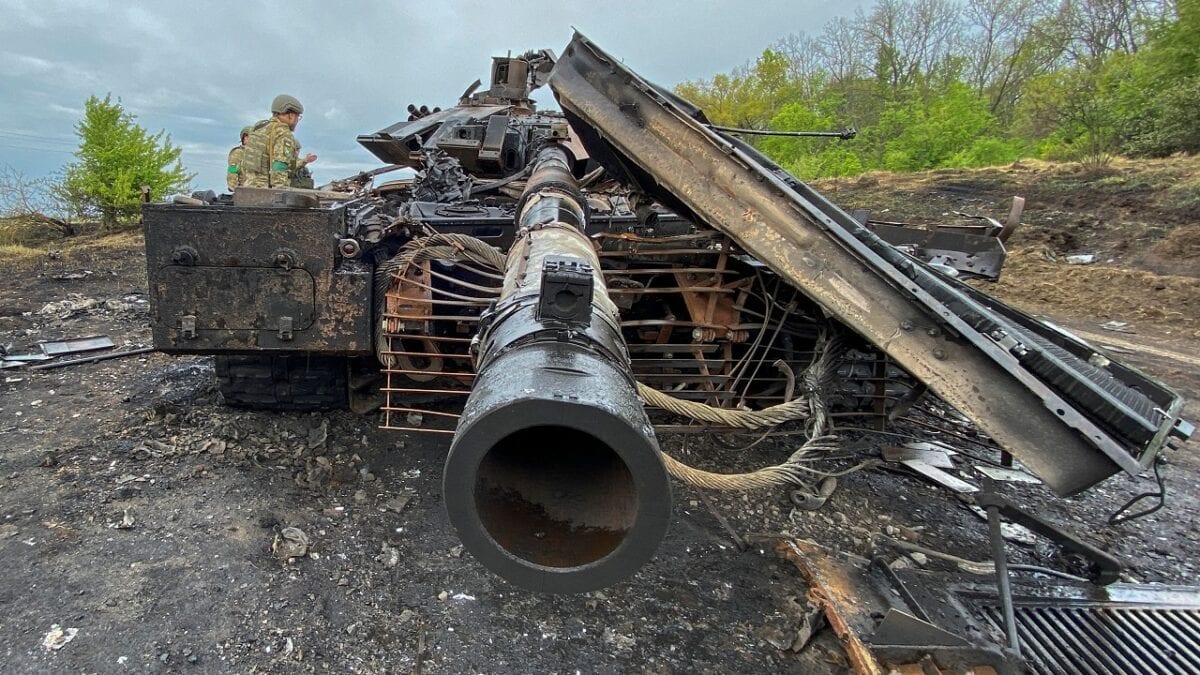
Russian main battle tank T-90M Proryv destroyed by Ukrainian Armed Forces is seen near the village of Staryi Saltiv, as Russia’s attack on Ukraine continues, in Kharkiv region, Ukraine May 9, 2022. Picture taken May 9, 2022. REUTERS/Vitalii Hnidyi.
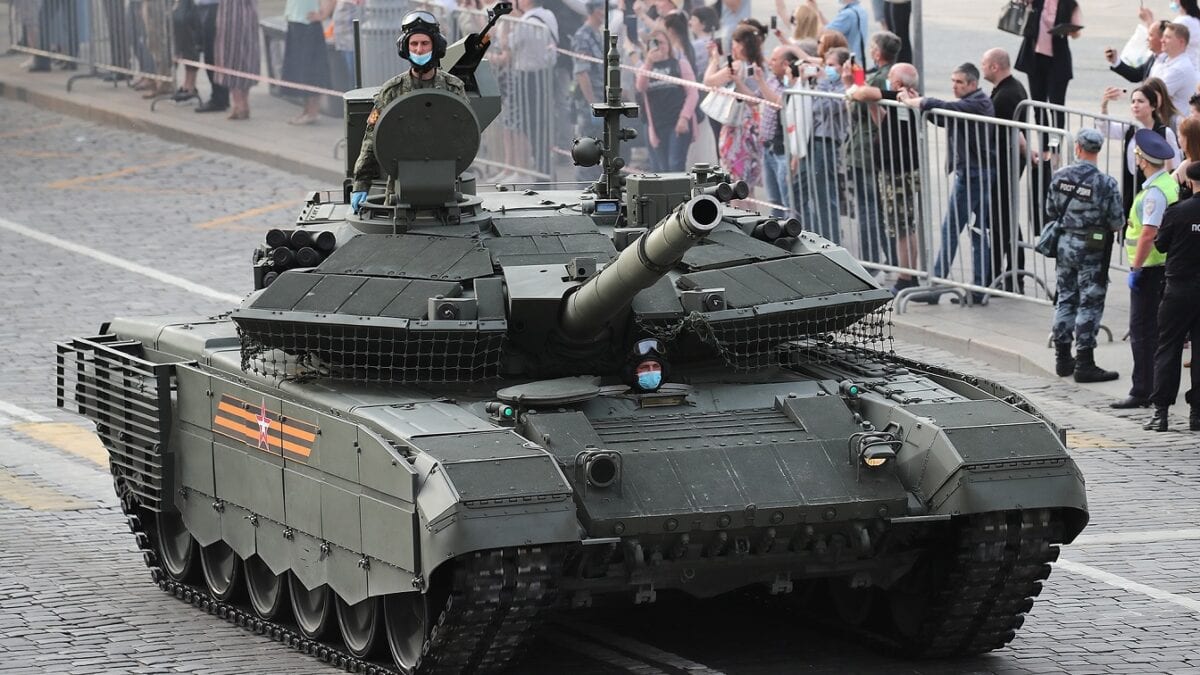
T-90M Tank from Russia. Image Credit: Creative Commons.
Harrison Kass is a Senior Defense Editor at 19FortyFive. An attorney, pilot, guitarist, and minor pro hockey player, he joined the US Air Force as a Pilot Trainee but was medically discharged. Harrison has degrees from Lake Forest College, the University of Oregon School of Law, and New York University’s Graduate School of Arts & Science. He lives in Oregon and regularly listens to Dokken.

